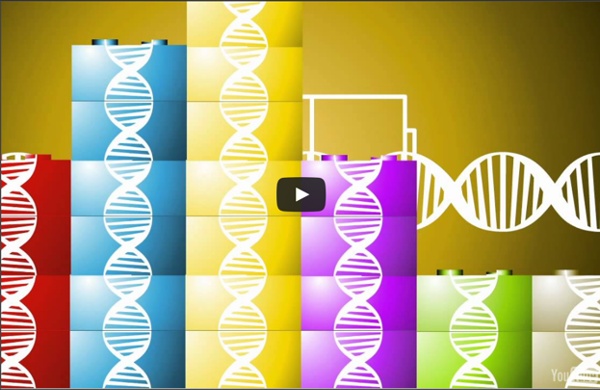



Inventing life: patent law and synthetic biology With promises of improved medical treatments, greener energy and even artificial life, the field of synthetic biology has captured the public imagination and attracted significant government and commercial investment. This excitement reached a crescendo on 21 May 2010, when scientists at the J Craig Venter Institute in the United States announced that they had made a “self-replicating synthetic bacterial cell”. This was the first living cell to have an entirely human-made genome, which means that all of the cell’s characteristics were controlled by a DNA sequence designed by scientists. This achievement in biological engineering was made possible by combining molecular biotechnology, gene synthesis technology and information technology. Possibilities of synthetic biology In his autobiography, A Life Decoded, J. Venter maintained: “I plan to show that we understand the software of life by creating true artificial life”. Another leading researcher, Jay D. Patentability Law reform
How will technology impact the future of health and medicine? Navigation Watch a Brief Day Three Recap More Videos from 2014 Participant Testimonials More Testimonials from 2014 2014 Program Schedule 2014 Faculty About Exponential Medicine Past Event Photos Synthesis Videos Participant Testimonials Exponential Medicine Exponential Medicine is a four-day conference by Singularity University that brings together top experts to inform medical services leaders how technology is impacting healthcare and medicine. See our Program Agenda and 2014 Faculty. Follow Us Powered By VisitorEngage f DnaTube.com - Scientific Video and Animation Site "Public Interest" Groups Call for Synthetic Biology Regulation By Kevin E. Noonan -- A broad coalition of 111 public interest groups announced today a manifesto for containing "synthetic biology," a term with a loose definition (including "extreme genetic engineering") that includes efforts such as Craig Venter's to produce novel microorganisms to more traditional biotechnology efforts in transgenic plants and animals and other genetically modified organisms (see "Not Quite Artificial Life, But We're Getting Closer: Reactions to Venter's Synthetic Cell"). • Jaydee Hanson -- Policy Director at the International Center for Technology Assessment• Dr. Eric Hoffman, Food & Technology Policy Campaigner at Friends of the Earth U.S., moderated the conference, introducing the principle motivation for the proposal: that government regulators have prematurely deemed the technology safe, which poses a risk to humans, the earth, and its other inhabitants. Dr. Dr. Ms. The final speaker, Ms. I.
Mededeling: cookies Tegenlicht kijkt mee over de schouder van een man die ondanks de crisis een overvloedige toekomst verwacht: Peter Diamandis. Door technologische ontwikkelingen wordt het leven beter dan ooit. Terwijl de wereld in crisis is, is één man positiever dan ooit. Zijn naam is Peter Diamandis, en hij is ervan overtuigd dat we de komende decennia alle grote problemen in de wereld kunnen oplossen. Razendsnelle ontwikkelingen in technologie maken het mogelijk te voorzien in de behoefte aan water, voedsel, onderwijs en gezondheidszorg van alle negen miljard mensen die onze wereld over twintig jaar zullen bevolken. Diamandis, schrijver van het boek ‘Abundance’, verkondigt zijn ideeën op de door hemzelf en de bekende futuroloog Ray Kurzweil opgerichte ‘ Singularity University’, midden in Silicon Valley. In deze uitzending kijkt Tegenlicht naar de wereld door de ogen van Peter Diamandis. Maar de ideeën van Peter Diamandis gaan verder dan specifieke technologische oplossingen.
Legal Issues in Synthetic Biology In their monthly column, Carlos María Romeo Casabona and Iñigo de Miguel Beriain, take a look at the legal issues in synthetic biology. New opinion on IP! The Opinion of the General Advocate of the European Court of Justice, in relation with the case delivered on 10 March 2011, has been published. Its final conclusion is this: V – Conclusion 119. Article 6(2)(c) of Directive 98/44/EC of the European Parliament and of the Council of 6 July 1998 on the legal protection of biotechnological inventions must be interpreted as follows: – The concept of a human embryo applies from the fertilisation stage to the initial totipotent cells and to the entire ensuing process of the development and formation of the human body. – Taken individually, pluripotent embryonic stem cells are not included in that concept because they do not in themselves have the capacity to develop into a human being. This Opinion raises a huge debate, which is directly connected with synbio. Carlos María Romeo Casabona
h+ Magazine | Covering technological, scientific, and cultural trends that are changing human beings in fundamental ways. Eray Ozkural December 23, 2013 During writing a paper for the 100 Year Starship Symposium, I wished to convince the starship designers that they should acknowledge the dynamics of high-technology economy, which may be crucial for interstellar missions. Infinity Point was the original name for the hypothetical event when almost boundless amount of intelligence would be available in Solomonoff's original research in 1985 (1), who is also the founder of mathematical Artificial Intelligence (AI) field. The original theory arrives at the Infinity Point conclusion by making a few simple mathematical assumptions, and solving a system of equations. Computer Science (CS) community size ~ improvement in computing technologyCS community size ~ rate of log of computing efficiencyFixed amount of money is invested in AI every year To remind Moore's Law, well, it is: "number of transistors placed on a microprocessor at a fixed cost doubles every two years" as originally conceived. . References: